Harmless hoverflies take on the appearance of dangerous or toxic insects in a clever and highly effective subterfuge to keep predators away, discovers Ian Morton

MiMiCry in Nature has been well documented, with categories bearing the names of the men who classified them. Browerian involves the same species: some caterpillars of the monarch butterfly eat a toxic variety of milkweed and themselves become toxic, so deterring predators from taking others from non-toxic plants. Mullerian involves two species imitating their warning characteristics to mutual advantage, as practiced by some ladybirds.
The big one is Batesian, defensive mimicry, whereby vulnerable species take on the appearance of others that predators know to be dangerous.
Henry Walter Bates (1825–92), one of those redoubtable Victorians who explored the secrets of regions unknown before the 19th century, spent 15 years documenting insects in the Amazon, determining, among other things, that some butterflies adopted the appearance of unrelated species for their own protection. He delivered his theory to the Linnean Society in London in 1861 and published a paper that established his name and legacy. He deserves to be better remembered.
Our greatest exponent of Batesian mimicry is the hoverfly. Not popular among the buzzing hordes, the hoverfly is, nevertheless, numerous species, with 276 classified in Britain. They’re arguably the most colorful and varied tribe to take to the air—even more so than butterflies (56 members), ladybirds (46), dragonflies (30) and damselflies (16), all of which flaunt their identities. in the matter of numbers, moths have it with about 2,400 species, but most are crepuscular and dowdy and some employ auditory Batesian mimicry by uttering ultrasonic squeaks to persuade bats that they are of an unpalatable kind.
With not a sting or a bite between them, hoverflies pretend to be honeybees, bumblebees, blowflies or wasps as they work wildflowers and borders or invade greenhouses (in America, they are known as flower flies).
هذه القصة مأخوذة من طبعة May 08, 2019 من Country Life UK.
ابدأ النسخة التجريبية المجانية من Magzter GOLD لمدة 7 أيام للوصول إلى آلاف القصص المتميزة المنسقة وأكثر من 9,000 مجلة وصحيفة.
بالفعل مشترك ? تسجيل الدخول
هذه القصة مأخوذة من طبعة May 08, 2019 من Country Life UK.
ابدأ النسخة التجريبية المجانية من Magzter GOLD لمدة 7 أيام للوصول إلى آلاف القصص المتميزة المنسقة وأكثر من 9,000 مجلة وصحيفة.
بالفعل مشترك? تسجيل الدخول
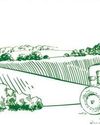
Happiness in small things
Putting life into perspective and forces of nature in farming

Colour vision
In an eye-baffling arrangement of geometric shapes, a sinister-looking clown and a little girl, Test Card F is one of television’s most enduring images, says Rob Crossan
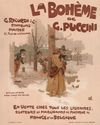
'Without fever there is no creation'
Three of the top 10 operas performed worldwide are by the emotionally volatile Italian composer Giacomo Puccini, who died a century ago. Henrietta Bredin explains how his colourful life influenced his melodramatic plot lines
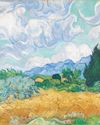
The colour revolution
Toxic, dull or fast-fading pigments had long made it tricky for artists to paint verdant scenes, but the 19th century ushered in a viridescent explosion of waterlili
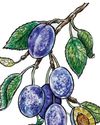
Bullace for you
The distinction between plums, damsons and bullaces is sweetly subtle, boiling down to flavour and aesthetics, but don’t eat the stones, warns John Wright

Lights, camera, action!
Three remarkable country houses, two of which have links to the film industry, the other the setting for a top-class croquet tournament, are anything but ordinary

I was on fire for you, where did you go?
In Iceland, a land with no monks or monkeys, our correspondent attempts to master the art of fishing light’ for Salmo salar, by stroking the creases and dimples of the Midfjardara river like the features of a loved one

Bravery bevond belief
A teenager on his gap year who saved a boy and his father from being savaged by a crocodile is one of a host of heroic acts celebrated in a book to mark the 250th anniversary of the Royal Humane Society, says its author Rupert Uloth

Let's get to the bottom of this
Discovering a well on your property can be viewed as a blessing or a curse, but all's well that ends well, says Deborah Nicholls-Lee, as she examines the benefits of a personal water supply
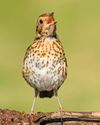
Sing on, sweet bird
An essential component of our emotional relationship with the landscape, the mellifluous song of a thrush shapes the very foundation of human happiness, notes Mark Cocker, as he takes a closer look at this diverse family of birds